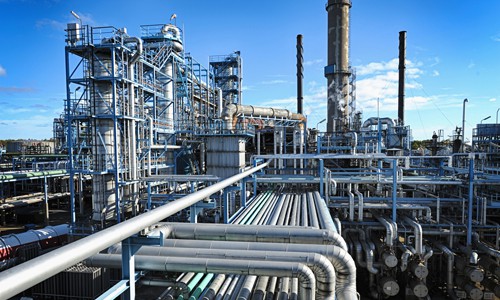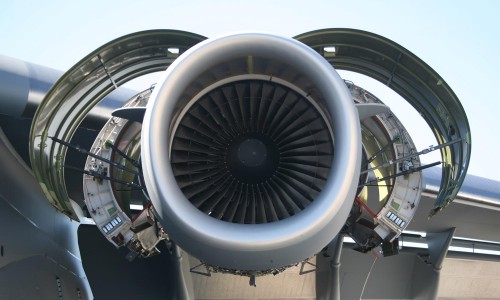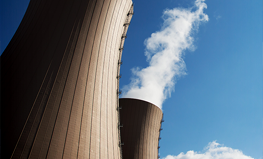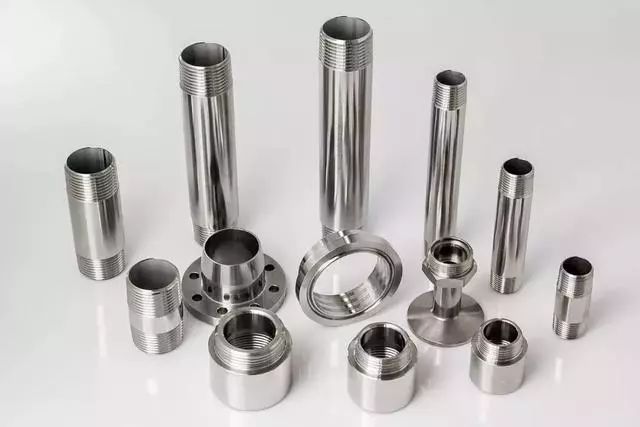
Stainless Steel is the abbreviation of stainless and acid-resistant steel. The steel that is resistant to weak corrosive media such as air, steam and water or has stainless steel is called stainless steel; Corroded steel is called acid-resistant steel.
Stainless steel refers to steel that is resistant to weak corrosive media such as air, steam, and water, and chemically corrosive media such as acid, alkali, and salt, also known as stainless acid-resistant steel. In practical applications, the steel that is resistant to weak corrosive media is often called stainless steel, and the steel that is resistant to chemical media corrosion is called acid-resistant steel. Due to the difference in chemical composition between the two, the former is not necessarily resistant to chemical media corrosion, while the latter is generally stainless. The corrosion resistance of stainless steel depends on the alloying elements contained in the steel.
Usually divided into:
Usually, according to the metallographic structure, ordinary stainless steel is divided into three categories: austenitic stainless steel, ferritic stainless steel, and martensitic stainless steel. On the basis of these three basic metallographic structures, for specific needs and purposes, dual-phase steels, precipitation-hardening stainless steels and high-alloy steels with an iron content of less than 50% are derived.
1. Austenitic stainless steel.
The matrix is dominated by austenite structure (CY phase) of face-centered cubic crystal structure, non-magnetic, and is mainly strengthened by cold working (and may lead to certain magnetic properties) stainless steel. The American Iron and Steel Institute is designated by numbers in the 200 and 300 series, such as 304.
2. Ferritic stainless steel.
The matrix is dominated by the ferrite structure of the body-centered cubic crystal structure ((a phase), which is magnetic, generally cannot be hardened by heat treatment, but can be slightly strengthened by cold working. The American Iron and Steel Institute is marked with 430 and 446.
3. Martensitic stainless steel.
The matrix is a martensitic structure (body-centered cubic or cubic), magnetic, and its mechanical properties can be adjusted by heat treatment. The American Iron and Steel Institute is designated by the numbers 410, 420 and 440. Martensite has an austenite structure at high temperature, and when cooled to room temperature at an appropriate rate, the austenite structure can be transformed into martensite (ie, hardened).
4. Austenitic-ferritic (duplex) stainless steel.
The matrix has both austenite and ferrite two-phase structure, and the content of the less-phase matrix is generally more than 15%. It is magnetic and can be strengthened by cold working. 329 is a typical duplex stainless steel. Compared with austenitic stainless steel, dual-phase steel has high strength, and the resistance to intergranular corrosion and chloride stress corrosion and pitting corrosion are significantly improved.
5. Precipitation hardening stainless steel.
The matrix is austenite or martensitic structure and can be hardened by precipitation hardening. The American Iron and Steel Institute is marked with a 600 series number, such as 630, which is 17-4PH.
Generally speaking, in addition to alloys, austenitic stainless steel has excellent corrosion resistance. In a less corrosive environment, ferritic stainless steel can be used. In a mildly corrosive environment, if the material is required to have high For strength or high hardness, martensitic stainless steel and precipitation hardening stainless steel can be used.
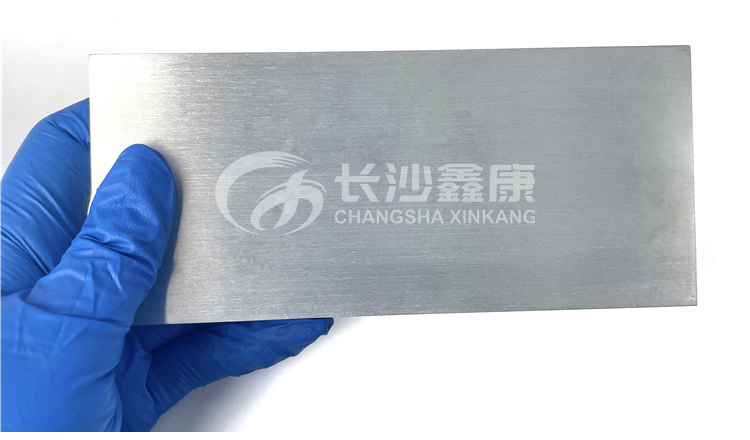
Stainless steel grades and properties commonly used in instruments
1. 304 stainless steel. It is one of the most widely used and widely used austenitic stainless steels. It is suitable for the manufacture of deep-drawn parts and acid pipelines, containers, structural parts, various instrument bodies, etc. It can also be used to manufacture non-magnetic, low-temperature equipment and part.
2. 304L stainless steel. In order to solve the problem of the development of ultra-low carbon austenitic stainless steel due to the precipitation of Cr23C6 causing serious intergranular corrosion tendency of 304 stainless steel under some conditions, its sensitized state intergranular corrosion resistance is significantly better than that of 304 stainless steel. Except for the slightly lower strength, other properties are the same as 321 stainless steel. It is mainly used for corrosion-resistant equipment and components that cannot be subjected to solution treatment after welding, and can be used to manufacture various instrument bodies.
3. 304H stainless steel. The internal branch of 304 stainless steel has a carbon mass fraction of 0.04%-0.10%, and its high temperature performance is better than that of 304 stainless steel.
4. 316 stainless steel. Adding molybdenum on the basis of 10Cr18Ni12 steel makes the steel have good resistance to reducing medium and pitting corrosion. In seawater and various other media, the corrosion resistance is better than 304 stainless steel, mainly used for pitting-resistant materials.
5. 316L stainless steel. Ultra-low carbon steel has good resistance to sensitized intergranular corrosion and is suitable for the manufacture of welded parts and equipment with thick section dimensions, such as corrosion-resistant materials in petrochemical equipment.
6. 316H stainless steel. The internal branch of 316 stainless steel has a carbon mass fraction of 0.04%-0.10%, and its high temperature performance is better than that of 316 stainless steel.
7. 317 stainless steel. The pitting corrosion resistance and creep resistance are better than 316L stainless steel, which is used in the manufacture of petrochemical and organic acid corrosion resistant equipment.
8. 321 stainless steel. Titanium-stabilized austenitic stainless steel, adding titanium to improve intergranular corrosion resistance, and has good high-temperature mechanical properties, can be replaced by ultra-low carbon austenitic stainless steel. Except for special occasions such as high temperature or hydrogen corrosion resistance, it is generally not recommended for use.
9. 347 stainless steel. Niobium-stabilized austenitic stainless steel, adding niobium to improve the intergranular corrosion resistance, the corrosion resistance in acid, alkali, salt and other corrosive media is the same as 321 stainless steel, and the welding performance is good, it can be used as a corrosion-resistant material and a corrosion-resistant material. Hot steel is mainly used in thermal power and petrochemical fields, such as making containers, pipes, heat exchangers, shafts, furnace tubes in industrial furnaces, and furnace tube thermometers.
10. 904L stainless steel. Super complete austenitic stainless steel is a super austenitic stainless steel invented by OUTOKUMPU in Finland. , It has good corrosion resistance in non-oxidizing acids such as sulfuric acid, acetic acid, formic acid and phosphoric acid, and also has good resistance to crevice corrosion and stress corrosion resistance. It is suitable for various concentrations of sulfuric acid below 70 °C, and has good corrosion resistance in acetic acid and mixed acid of formic acid and acetic acid at any concentration and temperature under normal pressure. The original standard ASMESB-625 classifies it as nickel-based alloys, and the new standard classifies it as stainless steel. China only has similar grades of 015Cr19Ni26Mo5Cu2 steel. A few European instrument manufacturers use 904L stainless steel as the key material. For example, the measuring tube of E+H mass flowmeter is made of 904L stainless steel, and the case of Rolex watches is also made of 904L stainless steel.
11. 440C stainless steel. Martensitic stainless steel has the highest hardness among hardenable stainless steels and stainless steels, with a hardness of HRC57. Mainly used to make nozzles, bearings, valve cores, valve seats, sleeves, valve stems, etc.
12. 17-4PH stainless steel. Martensitic precipitation hardening stainless steel with a hardness of HRC44 has high strength, hardness and corrosion resistance and cannot be used at temperatures above 300°C. It has good corrosion resistance to the atmosphere and diluted acid or salt. Its corrosion resistance is the same as that of 304 stainless steel and 430 stainless steel. It is used to manufacture offshore platforms, turbine blades, valve cores, valve seats, sleeves, valve stems Wait.
In the instrumentation profession, combined with versatility and cost issues, the conventional austenitic stainless steel selection sequence is 304-304L-316-316L-317-321-347-904L stainless steel, of which 317 is less used, 321 is not recommended, and 347 is used. For high temperature corrosion resistance, 904L is only the default material for some components of individual manufacturers. Generally, 904L is not actively selected in the design.
If you do not see the source you need on our website, please contact [email protected] or whatsapp:+86 15814459429


